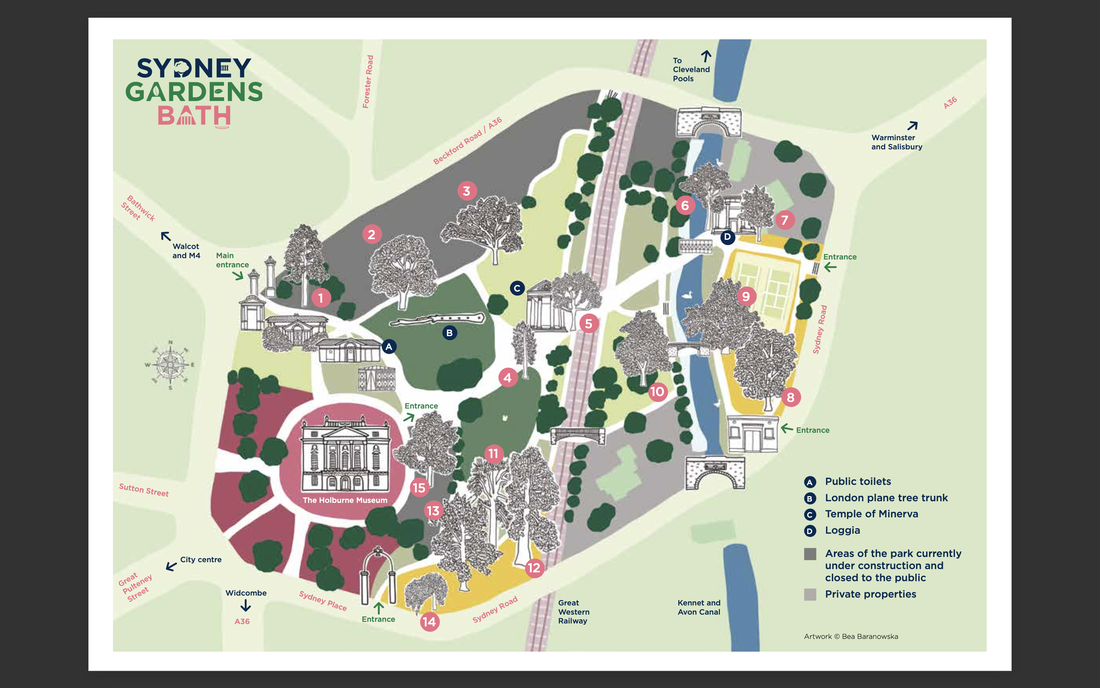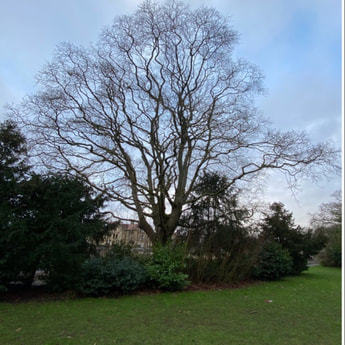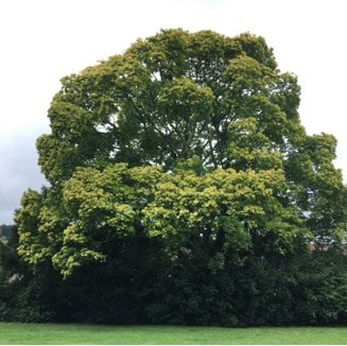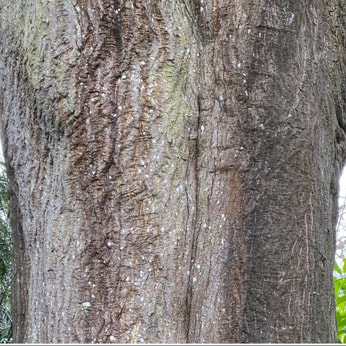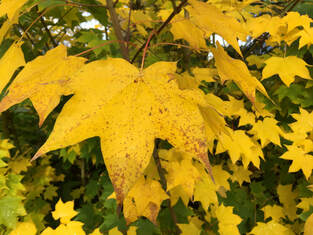After leaving the Black Pine tree take the path which forks to the left and runs beside the lower tennis courts. The Cappadocian Maple: also called the Golden Maple, can be found on the right side of the path. This Cappadocian Maple is a County Campion tree, meaning it is the largest of this species of Maple in the County of Somerset.
After leaving the Black Pine tree take the path which forks to the left and runs beside the lower tennis courts. The Cappadocian Maple: also called the Golden Maple, can be found on the right side of the path. This Cappadocian Maple is a County Campion tree, meaning it is the largest of this species of Maple in the County of Somerset.
This species of Maple was first introduced into Great Britain in Fifeshire, Scotland, in 1838. Over time it has become naturalised throughout the whole of the UK, seeding in the wild since 1977. The Maple tree is deciduous, meaning it will lose its leaves in the autumn. The Cappadocian Maple is of medium stature, growing to 20-30 meters tall and can live to over 300 years of age.
The leaves of the Maple are palm shaped with 5-7 lobes; they are yellow in Spring become green during the summer before changing to a rich golden yellow in the autumn.
The bark of the Maple tree is relatively smooth in the early years of growth but with age the bark develops shallow fishers, providing a good surface for moss growth, which can be seen in the photo above.
Reference
Gazzard, G. A. MSc (2021) wrote the above article with information from the following sources.
Rose, B. BSc (Hons) MSc DipArb(RFS) MICFor RCArborA Chartered Arboriculturist Arboricultural Association Registered Consultant (2020). Bosky Trees, Arboricultural Impact Assessment & Tree Protection Plan for trees atSydney Gardens, Bath. (Accessed 13/03/21).
Tree Register. (Accessed 13/03/21). Available at:
https://www.treeregister.org/champion/
RHS - Acer-cappadocicum-aureum. (Accessed 13/03/21). Available at:
https://www.rhs.org.uk/Plants/95741/acer-cappadocicum-aureum-/Details
Wikipedia; Cappadocian Maple Acer cappadocicum. (Accessed 13/03/21). Available at:
https://en.wikipedia.org/wiki/Acer_cappadocicum
Cowley, D. (2020), ‘Acer cappadocicum’ Trees and shrubs Online (Accessed 13/03/21). Available at:
(treesandshrubsonline.org/articles/acer/acer-cappadocicum/
